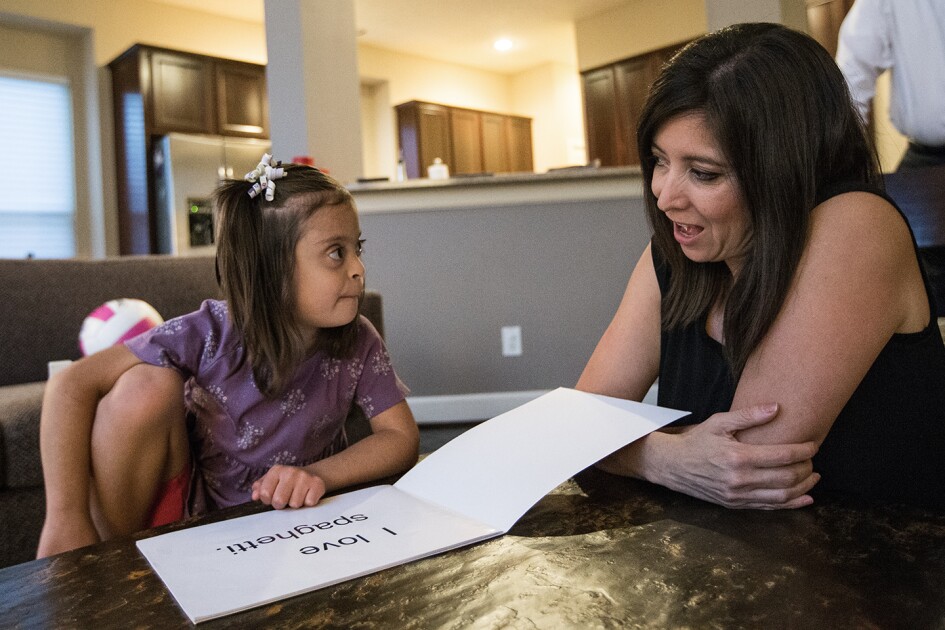
17 Jan The Number of Students in Special Education Has Doubled in the Past 45 Years
The number of students in special education in the United States has doubled over the past four decades, creating a rising share of public school kids who need special education services.
That’s according to the Pew Research Center, which collected data from the National Center for Education Statistics for a report on students in special education for Disability Pride Month, which is celebrated each year in July.
The total number of students in special education went from 3.6 million in the 1976-77 school year, to almost 7.3 million in 2021-22. These students now make up 15 percent of the K-12 student population across the country, nearly double what it was in the late 1970s.
The Individuals with Disabilities Education Act (IDEA), passed in 1975, is the law that requires all students with disabilities to get access to “free appropriate public education.” Starting the following school year, NCES started collecting nationwide data on students with disabilities from ages 3 to 21.
All students in special education need Individualized Education Programs, or IEPs, to meet their educational needs. While the number of students with IEPs has steadily increased, special education teacher shortages have also increased, causing a strain on special education services, according to experts.
Here are some statistics about special education over the past few decades:
Students in special education make up a rising share of the student population
The number of students in special education has been steadily increasing since the NCES data collection first began, in 1976.
In the last decade, the percentage of students in special education in schools has increased from about 13 percent of the total student population in 2011-12, to almost 15 percent in 2021-22. In 1976-77, students in special education made up 8 percent of the overall student population.
Amid the COVID-19 pandemic, the number of students with IEPs dropped by 0.1 percent, between 2019–20 and 2020–21, going from 7.3 to 7.2 million students, according to NCES. The drop may be due to some learning difficulties and health concerns students with disabilities and their families faced during the first year of the pandemic, when special education services may have been limited, according to the Pew report.
The 2020-21 school year was the first time the number of students in special education had decreased in a decade. In 2021–22, which is the latest year that NCES has published data, special education enrollment almost rebounded to pre-pandemic levels.
But because the total public school enrollment dropped by 3 percent during the pandemic and didn’t fully recover in 2021-22, the percentage of public school students who were served under IDEA continued its upward trend, reaching an all-time high in the last school year.
Schools struggling to fill special education teacher vacancies
One of the most challenging aspects of making sure all students in special education receive the services they need is the staffing shortages a lot of districts are facing, experts told EdWeek.
While staffing shortages aren’t exclusive to special education, districts are specifically struggling to find special education teachers, according to the Pew report. Forty percent of all public schools that had a special education teaching vacancy reported that they either found it very difficult to fill the position or were not able to do so, according to an NCES report.
The only teaching vacancy districts struggled more with was foreign language teachers, according to the Pew report.
Learning disabilities are the most common reason for IEPs
The most common type of disability category under IDEA is “specific learning disability,” which includes students who have difficulty reading, writing, or doing math, according to NCES data. These learning disabilities are often called dyslexia, dysgraphia, and dyscalculia respectively.
In 2021-22, about 32 percent of all students in special education, or about 2.3 million students, had a specific learning disability. The second most common category for students to be on IEPs is speech or language impairment. Nineteen percent of students with IEPs had this disability, according to the Pew report. Fifteen percent had a chronic or acute health problem that adversely affected their education performance, the report said.
Finally, 12 percent of all students in special education have autism spectrum disorder. While the percentage of students in special education with autism has increased over the last decade, the share of students with specific learning disabilities and speech or language impairments has gone down, according to the Pew report.
Percentage of students in special education varies widely by state
Thirty eight states saw increases in the number of students with special education needs over the last two decades, according to the Pew report.
The biggest increase was in Utah, where the number of students with IEPs increased by 65 percent. Rhode Island saw the largest decline in the same time period, at 22 percent.
The discrepancies in the percentages of students with IEPs in each state may be a result of state policies and the way officials interpret eligibility criteria, according to a 2019 Government Accountability Office report.
That’s why the number of students in special education varies widely in each state. New York serves the largest share of disabled students in the country at 20.5 percent of its overall public school enrollment, according to Pew, followed by Pennsylvania at 20.2 percent, and Maine at 20.1 percent. Meanwhile, students in special education account for just more than 11 percent of the total student population in Hawaii, Idaho, and Texas.


No Comments